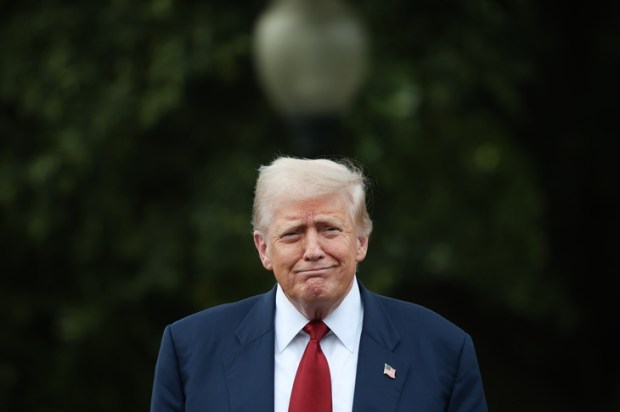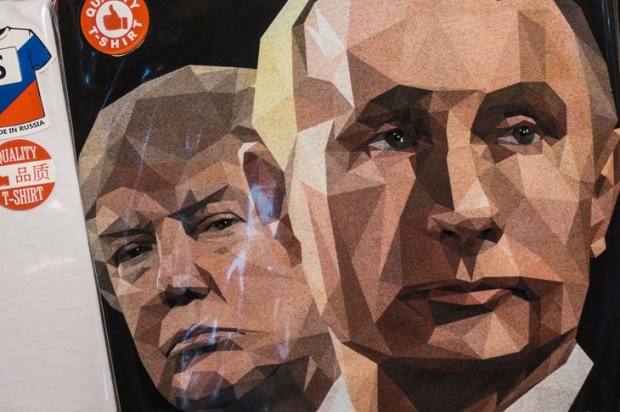During an Oval Office meeting with Nato Secretary-General Mark Rutte, President Donald Trump has threatened to impose a tariff of at least 100 per cent on imported Russian products if Russia does not agree to a ceasefire in its Ukrainian war within the next 50 days.
This threat is a powerful yet symbolic action because Russian imports have accounted for only 0.1 per cent of total American imports in 2024 (down from 0.2 per cent in 2023). Hence, the imposition of direct tariffs on Russia would have a negligible economic effect in the United States. The White House later explained that Trump was talking about 100 per cent secondary tariffs on nations doing business with Russia in the absence of a peace deal between Ukraine and Russia.
But how did America get from 100 per cent to 500 per cent tariff threats?
A bipartisan Senate bill Sanctioning Russia Act 2025, co-sponsored by senators Lindsay Graham and Richard Blumenthal, would empower the President to impose up to 500 per cent tariffs on imports from any country still trading in Russian energy, with at least 85 congressional supporters backing the proposed measure. Graham and Blumenthal insist in their joint statement that the purpose of their proposal is to entice Putin ‘to come to the peace table’. What began as a 100 per cent tariff warning has thus evolved into a formidable legislative threat, aiming to give President Trump an even more fearsome weapon to bring Putin to the negotiating table. For now, Senate Majority Leader John Thune has paused floor action on the bill, suggesting the White House might act on its own first, yet keeping the option of activating the proposed legislation if additional leverage is needed.
America’s pivot from diplomacy to economic warfare against countries that continue to buy Russian oil, gas, or other commodities, is a risky development because it might result in soaring energy prices, compromised trade ties, and unexpected trade benefits for rival economies. Specifically, the threat of massive tariffs risks removing a sizeable part of Russian supply from global markets, potentially increasing oil prices at a time when geopolitical tensions are already high.
Analysts estimate 0.5-1 million barrels per day of Russian crude oil could be stripped from markets if China and India, or other nations, abandon Moscow’s oil because of the threat of stiff tariffs. With OPEC reversing production cuts, 80 per cent of the remaining spare capacity sits in the Middle East, reliant on the geopolitically sensitive Strait of Hormuz, which is under constant threat of Houthi attacks. Shipping risks have soared: 183 Russian tankers are now blacklisted, pushing freight rates to Asia up 50 per cent and forcing older, lightly insured vessels and risky ship-to-ship transfers into service. American shale output stands at a record 13.4 million barrels per day but the current price range of $62-68 per barrel and higher costs from steel and equipment tariffs (adding $3-5 per barrel), limit the ability to fill any supply gap swiftly.
India and China account for roughly 70 per cent of Russia’s oil exports; these countries benefit from steep discounts and shifting global trade patterns post-2022. A 500 per cent tariff would render Russian barrels uneconomical, forcing buyers to pay a steep premium to alternative suppliers, such as Saudi Arabia or Iraq.
India’s Russian oil imports hit 2.1 million barrels per day in April 2025, over a third of its total imports, driven by discounts, even after the imposition of Western sanctions. China’s purchases have remained consistently above 1 million barrels per day since 2022, cementing Russia as a major supplier for its refining sector. Early market reactions have been muted, with Brent Oil falling nearly 2 per cent on news of the tariff threat, suggesting scepticism over actual enforcement and the potential for alternative supply adjustments.
Ironically, America stands to gain little directly from punishing importers of Russian oil and gas, while risking retaliatory measures that could hurt US exporters and consumers alike. Secondary tariffs on major trading partners could prompt retaliatory measures against US agricultural and manufactured exports, jeopardising key markets and ongoing trade negotiations, most notably with India, which is still hammering out a trade deal to avoid steep duties scheduled to start on August 1. Beyond oil, a sweeping tariff regime risks broad supply chain disruption and political retaliation across multiple sectors. Fertiliser imports from Russia, vital to American farmers, could face bottlenecks, driving up domestic food costs and sowing discontent in swing-state agricultural communities. Critical Russian exports such as platinum (import value of $877 million in 2024) and specialised chemicals ($651 million), used in US manufacturing and medical supply chains, could harm these industries. Trading partners, notably in Asia and Europe, may retaliate with their duties or sanctions on US goods, jeopardising sectors from technology to textiles, and undermining diplomatic relations at a time when unity on Ukraine is crucial.
What may appear as an all-powerful tool for global leverage risks turning into a self-defeating exercise. By threatening unprecedented 500 per cent tariffs, the US could drive energy prices higher worldwide, fuelling inflationary pressures in the US and beyond, and strain alliances and trade negotiations, particularly with India and China, whose market power could erode US export growth. It could also encourage Russia to deepen ties with other non-Western partners, insulating Moscow from the very pressure the policy seeks to achieve. Moreover, it could sow domestic political discontent as consumers and farmers bear the brunt of higher costs across food, fuel, and manufactured goods.
In summary, rather than a swift path to peace, the 500 per cent tariff threat may force the US into reactive mitigation, weakened trade positions, and a world economy more volatile and fractured than ever. The proposed 500 per cent tariff is perhaps not a good idea.

























